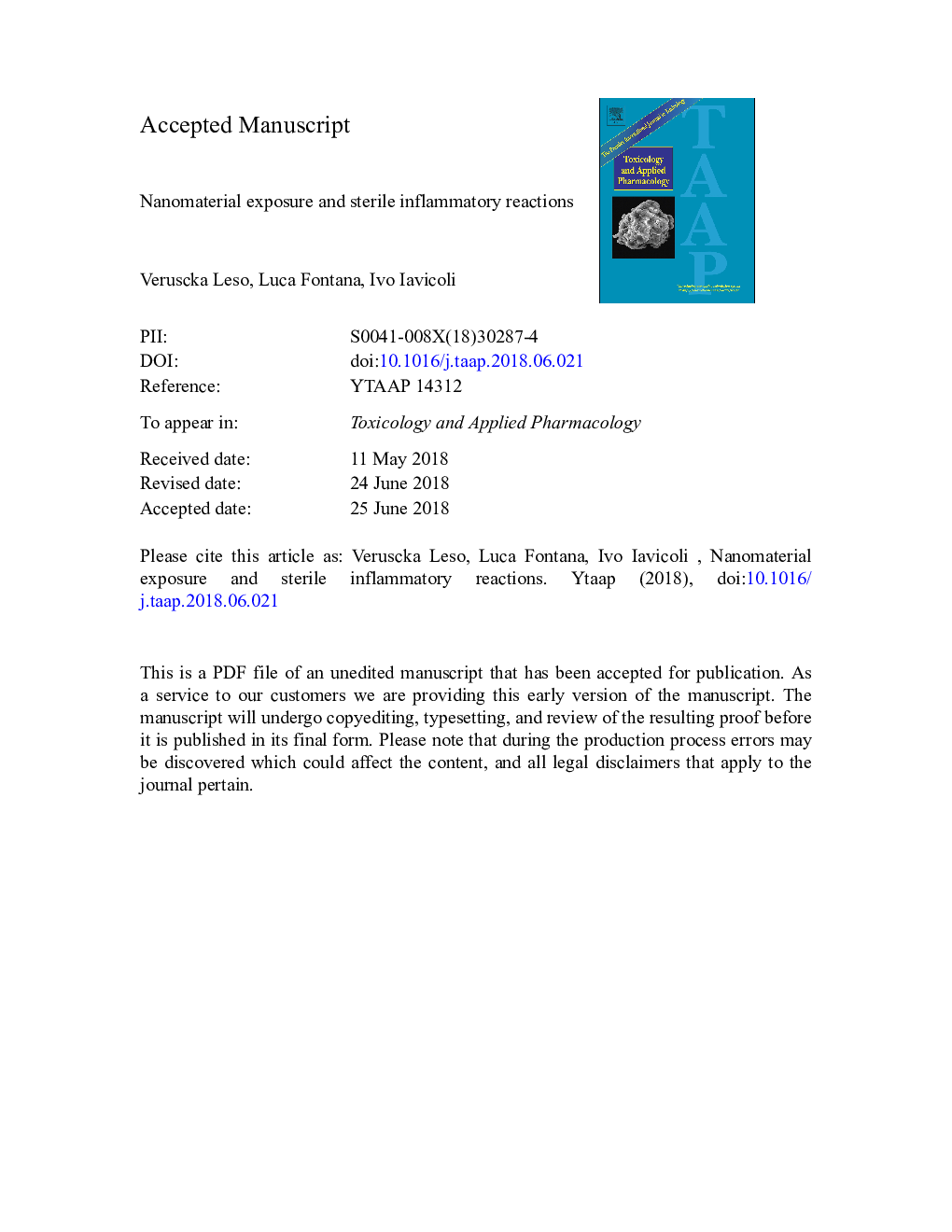| Article ID | Journal | Published Year | Pages | File Type |
|---|---|---|---|---|
| 8538061 | Toxicology and Applied Pharmacology | 2018 | 49 Pages |
Abstract
“Sterile inflammation” is a type of pathogen-free inflammation which may be induced by various physical, chemical, or metabolic insults, including environmental particles e.g. silica dioxide crystals and asbestos. The possible role of nanomaterials as danger signals able to trigger sterile inflammatory responses is not yet fully understood. Therefore, the aim of this review was to investigate conditions of sterile inflammation induced by nanomaterial exposure with a specific focus on possible modes of action. Metal-, metal-oxide- and carbon-based nanomaterials may trigger a sterile inflammatory cascade by means of different damage-associated molecular patterns, including chromatin associated protein high-mobility group box-1 secretion, ATP, ADP and adenosine purinergic signaling, interleukin-1α alarmin, and NLPR-3 inflammasome activation. However, such preliminary results do not enable us to draw definite conclusions regarding the sterile inflammatory potential of nanomaterials and possible underlying molecular mechanisms. Therefore, further research is required to understand the complex “interplay” between the multitude of nanomaterial intrinsic or acquired physico-chemical properties and the extremely changeable immunological competence of organisms. The identification of possible nanomaterial modes of action in sterile inflammation could provide early indicators of the biological reactivity of nano-sized chemicals and could direct “safe by design” efforts for improving occupational safety and that of the general population. Moreover, the possible pathological consequences of nanomaterial-induced sterile inflammatory reactions need to be clarified in order to define suitable preventive measures to protect the health of chronically exposed subjects.
Related Topics
Life Sciences
Environmental Science
Health, Toxicology and Mutagenesis
Authors
Veruscka Leso, Luca Fontana, Ivo Iavicoli,
